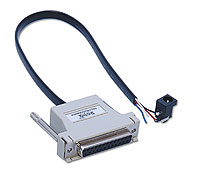- Digitrax LocoNet®
-
- LocoNet Tools
- LocoNet Simulator
- Command Stations
- Programmers & Adapters
- Networking
- Technical
- Supported Hardware
- Devices, command stations, networks, and protocols:
- Anyma DMX
- Arduinos
- Atlas Commander
- Bachrus
- BiDiB
- CAN Bus Networks
- CBUS®
- C/MRI
- CTI Electronics (Acela)
- CVP EasyDCC
- Dcc4Pc
- DCC-EX EX-CommandStation
- DCC++
- DCC Specialities
- Digi XBee
- Digikeijs / YAMORC
- Digitrax
- DMX 512 (Powerline)
- ESU ECoS
- Fleischmann
- Hornby
- Insteon (Powerline)
- LCC
- Lenz
- Lionel TMCC
- LocoNet
- Maple Systems
- Märklin CS2
- MERG
- Modbus
- MQTT
- MRC
- NAC Services RPS
- NCE
- Oak Tree Systems
- OpenDCC
- OpenLCB
- Pi Engineering RailDriver
- Powerline
- Protrak Grapevine
- QSI Quantum Programmer
- Raspberry Pi
- RFID Readers
- Roco
- SPROG DCC
- SPROG DCC Generation 5
- SRCP server
- TAMS Master Control
- TracTronics SECSI
- Uhlenbrock Intellibox
- Viessmann Commander
- Wangrow System One
- WiFi Throttles
- X10 (Powerline)
- XPressNet
- Zimo MX-1
- ZTC Controls
- Applications
- By the community of JMRI.org:
- Tools
- JMRI tools for working with your layout:
- Common Tools:
- Blocks:
- Routing and Control:
- Other:
- System-specific...
- Web server tools...
- Layout Automation
- Use JMRI to automate parts of your layout and operations:
Hardware Support: Connecting to a Digitrax PR2

The PR2 is a standalone programmer that can be used to set CV's in all decoders that DecoderPro supports. It can also be used to download sound information into Digitrax sound decoders and, within its limited current capability, run one locomotive to test it.
To use it, you connect it to its power supply and to a dedicated piece of track which you'll use for a programming track. Also, connect the 25 pin RS232 connector to a serial port on your computer. You may have to use a USB to serial adapter, and/or a DB25 to DB9 connector adapter (The PR2 has a standard RS232 25 pin connector; most computers now have a 9 pin RS232 connector, and there are simple adapters available to convert the wiring.)
The PR2 is not a LocoNet® interface, and does not connect to the LocoNet on your layout in any way. It cannot attach to a command station like the MS100, PR3, LocoBuffer, LocoBuffer-II, and LocoBuffer-USB do. The cable that comes with the PR2 is not a LocoNet cable, and you should not plug a LocoNet cable into the PR2.
For more information on the PR2 itself, please see the Digitrax PR2 page and the PR2 support page in the Digitrax Tech Support Depot.
Recommended setup
To set up DecoderPro to use the PR2:
- Start DecoderPro.
- Open the Preferences window from the Edit menu and configure the connection by
selecting the Connections item at left and:
- Select Digitrax as the Manufacturer
- Select the PR2 as the Connection
- Select the serial port that's connected to the PR2
- The speed will be fixed at 57,600 baud; don't try to change this in your computer's settings
- The "Flow Control" option defaults to "Use Hardware Flow Control", which uses the status leads in the serial connection to determine when the PR2 is ready to send and receive. You should try that first, as it is the most reliable mode. Only if you can't program decoders using that choice, and only after checking that you're using the right port, should you select "None" for this Preference field and try again.
- Click Save at the bottom of the Preferences pane, quit the program and restart.
Usage suggestions
You can use a JMRI throttle to control the locomotive connected to the PR2. Use the JMRI Power Control or the "Power" menu item on the Throttle's menu bar to turn on track power, and then you can operate the locomotive normally.
The PR2 can only provide very limited current, so Digitrax has built a "neutral mode" into their sound decoders. When JMRI and the PR2 is running a Digitrax sound decoder, the motor is disconnected to reduce the current load. You can still ramp the speed up and down with the throttle and listen to how the sound responds, but the motor won't move the locomotive.
Other decoders, including decoders from other manufacturers, may draw enough motor current to trip the PR2 internal circuit breakers. This will cause JMRI to mark track power as "off". Just wait a couple seconds and turn the track power back on to recover.
LocoNet® is a registered trademark of Digitrax, Inc.